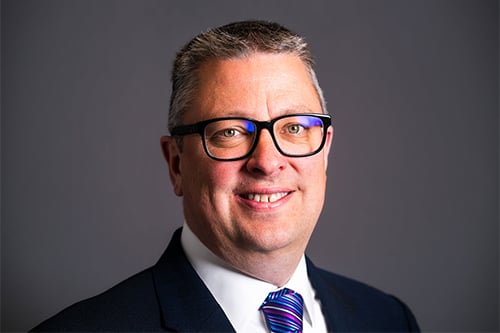

In a recent media briefing, Andy Bord (pictured) CEO of Flood Re – the joint initiative between the UK insurance industry and the UK government to boost flood insurance availability and affordability – dived into the key figures defining this scheme during the year ended March 31, 2022.
He noted it was a year of strong financial results, that saw its number of policies written rise 18% to just under 257,000, bringing the total number of Flood Re-backed policies since the initiative’s inception in 2016 to nearly half a million. Meanwhile, Flood Re’s GWP rose to £46 million from £39 million for the year ended March 31, 2021, while its gross insurance claims sat at £32 million, reflecting the fact that this period, while ‘benign’, was not wholly flood free.
“I’m very pleased that our headline results in each of those KPIs have remained really strong. So, we’ve seen a continued 98% of people at flood risk able to achieve 10 or more quotes,” he said. “And as a reminder, before the scheme went live, only 9% of people could get two quotes or more. So, it continues to have a transformational effect.”
Bord emphasised that while this 2021/2022 period could be described as a benign period for flood, the extreme flood event that impacted continental Europe and the unprecedented landfall storms that hit the UK earlier this year must act as a clear reminder of the need to adapt to severe weather incidents. The most significant move made by Flood Re to address this adaptation was the introduction of its world-first ‘Build Back Better’ proposition in April 2021 – almost five years to the day the scheme itself launched.
“I’m delighted that, at launch, insurers representing over half of the most at-risk policies had given commitments to participate in the scheme,” he said. “And I’m also pleased to say that of the remaining insurers, we’re in advanced discussions with most of those, and I expect that number to continue to increase over the course of this year.”
Elsewhere, Bord highlighted that while so much has been achieved over the first six years of the scheme’s existence, there is still so much that needs to be done. Flood Re is acting at the centre of the industry and as a catalyst for activity, he said, much of which needs to be undertaken by others.
“We need to continue to build on the success of Build Back Better, making sure that more insurers continue to back that,” he said. “And success, for me, for Build Back Better will be that it just becomes a normalised part of any home insurance policy. In the same way that we talk about ‘new for old’ on contents, Build Back Better will just become the normal way [so] that when you are unfortunate enough to suffer the trauma of flooding, you are put back into a more resilient, better-protected state into the future.”
In addition, Bord said, is the need to normalise flood performance certificates so the flood risk of a property can be codified, as can the level of resilience measures that currently exist within a home and the level of resilience that could exist. As a result of this, when a property is bought, sold or rented, the flood risk and flood mitigation measures that have been instigated can be very coherently understood.
“Finally, we’re calling on government, particularly with the upcoming levelling up and regeneration bill, to take this once-in-a-generation opportunity to improve the planning process and take better account of flood risk,” he said. “[That’s] when new properties, new developments are being approved for building or when they’re being approved for changes at a very local community level, or a much larger national level.”
Underpinning Flood Re too, is a recognition of the role that brokers play in helping steer change and uptake around flood resilience measures. It’s often brokers that people with non-standard cover turn to, Bord said, and flood often falls into that space. Flood Re has been actively working with BIBA, especially around its signposting activity to make sure brokers are aware of what’s going on.
Read more: BIBA, Flood Re welcome government consultation
“It’s mainly in a communication and awareness space that we’ve been involved with brokers,” he said. “As it’s clearly an insurer’s decision as to whether Build Back Better is part of that their core product proposition or not.”
Build Back Better is still a relatively new initiative, Bord noted, though Flood Re has been lobbying government for a long while to enable the required legislative change that permits the scheme to offer this reinsurance offering. The key message he has to deliver to brokers on the subject is around the need to pay clear attention to insurers that are offering this as part of their product offering.
“Because, while no-one wants to flood, the reassurance of having Flood Re means that their policy will be available and will be affordable,” he said. “Adding the additional comfort of Build Back Better means that if they do have the misfortune to flood, they’ve got the confidence that their insurer will assess their home and look at options for making it more resilient to future flooding.
“We shouldn’t just be putting people back into the same state and hoping somehow that they will be better protected against flooding - we have to take positive intervention.”
